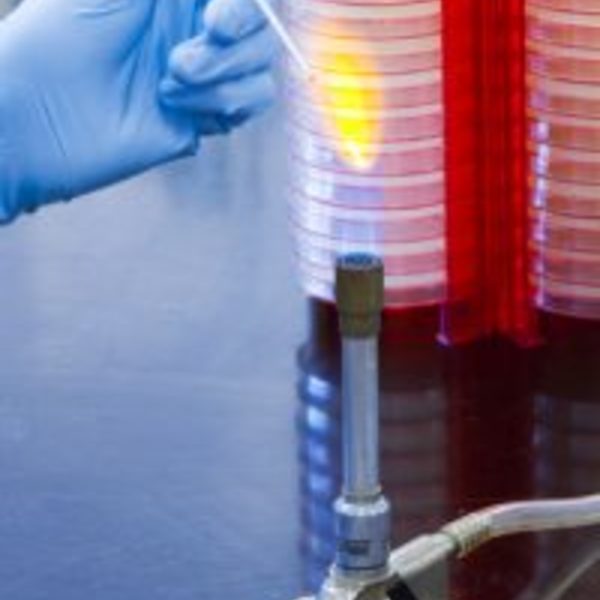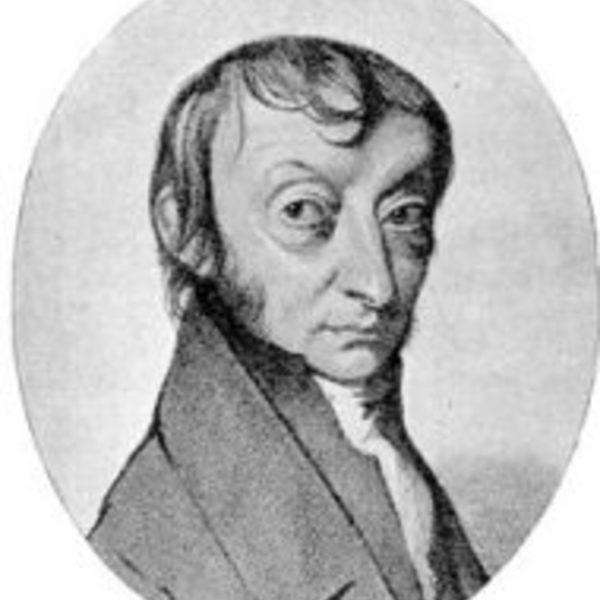AACT Member-Only Content
You have to be an AACT member to access this content, but good news: anyone can join!
Chemistry Solutions
March 2015 | Resource Feature
Positioning the Gas Laws in Our Chemistry Teaching
By W. Patrick Cunningham
Introduction and context
I have had the privilege in my many years of teaching to see three distinct changes in the way we teach chemistry. They have been pendulum-like swings in teaching philosophy, oscillating between what we might call “top-down” and “bottom-up.”
In the top-down method, which I labored under as a student in the 1960s and which many teachers use today, chemistry is treated as a body of knowledge that we offer the minds of students. It starts with definitions and models of the atom and molecule. It then moves through reaction types and stoichiometry, toward acid-base and redox reactions, and maybe some thermodynamics. The idea is to put as much chemical knowledge into students as we can, supporting it with experiments where possible and with paper exercises and simulations when we don’t have the empirical tools or other resources.
In the bottom-up method, associated with constructivist principles and inquiry learning, broad coverage attempted in top-down instruction is exchanged for deep understanding and laboratory discovery. Students build their own “house of chemistry” from experiences in and out of the lab, classroom lectures, personal reading, and group discussions. Thus, for instance, in the first labs of the CHEMS, or Chem-Study system (1), teachers used a series of three experiments with candles, wax, and flames to permit students to discover themselves the difference between physical and chemical change, as well as the composition of flames. In so doing, students usually learned that flames do not exist without burning gas.
 In a top-down teaching environment, teachers tell students about this in two minutes of lecture and then demonstrate a Bunsen burner flame. In bottom-up, teachers spend about 200 minutes doing lab work and discussing, and students arrive at the same result. It’s no wonder that in the 1980s, chemistry teaching in high school swung back to a more efficient top-down approach. It also produced a very different kind of learner.
In a top-down teaching environment, teachers tell students about this in two minutes of lecture and then demonstrate a Bunsen burner flame. In bottom-up, teachers spend about 200 minutes doing lab work and discussing, and students arrive at the same result. It’s no wonder that in the 1980s, chemistry teaching in high school swung back to a more efficient top-down approach. It also produced a very different kind of learner.
Meanwhile, research into the way students learn, and the diverse learning styles teachers encounter in the classroom, supports constructivist learning. (2) In that style, each student is assumed to be the one in charge of his or her own learning. (3) Students build on what they already know, take the experiences they have in the classroom and lab, and construct their own mental model of the scientific systems they are studying. The laboratory experience is a critical, even essential, component of constructivist learning, and the lecture or lecture-demo is an important and useful—but secondary—means of helping students put together those models-in-the-mind. Textbooks and problem-solving techniques of chemistry also become ancillary learning devices that contribute to students’ growth.
Some pedagogical thoughts on gas laws
 Historically, the development of the gas laws by Boyle, Amonton, Charles, Gay-Lussac, and Avogadro was critical to the work of Dalton and others in the 19th century. (4) Most importantly, Avogadro’s hypothesis, equal volumes of gases at the same temperature and pressure contain equal numbers of molecules, gave us the system of atomic and molecular masses in use today, and ultimately, the periodic table and our understanding of chemical reactions. It is reasonable then, to help students build their own understanding of the atomic model by introducing them to the same empirical foundation that Avogadro and his successors used.
Historically, the development of the gas laws by Boyle, Amonton, Charles, Gay-Lussac, and Avogadro was critical to the work of Dalton and others in the 19th century. (4) Most importantly, Avogadro’s hypothesis, equal volumes of gases at the same temperature and pressure contain equal numbers of molecules, gave us the system of atomic and molecular masses in use today, and ultimately, the periodic table and our understanding of chemical reactions. It is reasonable then, to help students build their own understanding of the atomic model by introducing them to the same empirical foundation that Avogadro and his successors used.
Avogadro built upon the foundation of the gas laws by interpreting the study of reacting gases. For instance, two volumes of hydrogen react with exactly one volume of oxygen at the same temperature and pressure. One volume of chlorine reacts with exactly one volume of hydrogen at the same temperature and pressure.
This idea is further supported by a simple Boyle’s law experiment with a metered pressure sensor, or without out one. Equal volumes of helium, air, oxygen, carbon dioxide, and natural gas compress in exactly the same way (within experimental uncertainty) when the gases are at room temperature. To students unfamiliar with this idea, this experiment is truly eye-opening.

Once students have discovered the identical compressibility of gases and the differing densities of gases, they are introduced to the Law of Combining Volumes and Avogadro’s hypothesis. This relationship is shown dramatically in the CHEM video “Gases and How They Combine.” This resource is unique in the video literature because it demonstrates the reaction of several gases measured at the same temperature and pressure—reactions I have been unable to find elsewhere. I show the entire 22-minute video and have students use a worksheet to help them arrive at the same ideas Avogadro did. Because they have participated in the discovery, they believe his hypothesis: Equal volumes of gases at the same temperature and pressure contain equal numbers of molecules.
For those who wish an alternative contemporary approach that lacks the dramatic reactions visible in that 1962 film, Crash Course gives an 11-minute summary of the foundation of chemistry by Avogadro and others in that era.
Once students have had hands-on experience with gases, they have the empirical foundation for the existence of molecules and atoms, the differing atomic masses of the elements, and the kinetic molecular theory.
I have successfully used these activities, along with other introductory ones, with my chemistry students since 2002, devoting seven class days to the sequence. My public school chemistry students (regular and pre-AP) performed at or above district levels every year since I began using this sequence.
 Gas laws: Scope and sequencing suggestions
Gas laws: Scope and sequencing suggestions
Where in the school year should teachers place this lesson sequence? Many textbooks and scope-sequences place gas laws all together in the second semester of a first-year high school chemistry course. However, I have found the best placement for this part of the gas law learning is at the end of the first month of the first semester. Students study measurement and accuracy in that time-frame, as well as properties of solids and liquids. I have them perform experiments measuring the density of solid objects, both regular and irregular solids, as well as liquid specimens.
The logical next step is to investigate the properties of gases, and then, keeping temperature and pressure constant, to measure gas densities. (5) With that introduction, a study of gas compressibility and an inquiry into how densities can be different, while compressibility is similar, is a logical follow-up. That leads to an understanding of relative molecular masses and how the table of atomic masses was developed.
This has been found to be an effective sequence in first-year classes, and with AP chemistry students who have not seen it in their first high school class:
| Lesson 1 |
Students qualitatively become acquainted with the gas laws. |
| Lesson 2 |
Students interpret results from gas law investigation to determine temperature, pressure, and volume relationships, which provokes the idea of gas having density.
|
| Lesson 3 |
Students quantitatively investigate gas densities.
|
| Lesson 4 |
Students become more familiar with the concept of gas density on the microscopic level.
|
| Lesson 5 | Students investigate gas compressibility to collect data and lead them to determine which density theory is correct.
|
| Lesson 6 |
Students use their results from the Boyle’s Law lab deduce which of the two density theories is correct.
|
| Lesson 7 | Once students have come to the conclusion that the higher-mass particles theory best explains differing gas densities, they watch a video about the law of combining volumes and Avogadro’s hypothesis.
|
The next days of class can then be used to expand upon Avogadro’s discovery and introduce the concept of relative atomic masses and the atomic mass scale. Once students have a strong empirical foundation and understanding of Avogadro’s hypothesis, their understanding and enthusiasm have proved to be stronger than it was when I used a top-down, less constructivist approach.
References & Notes
- Campbell, J. A., “Chemical Education Material Study,” J. Chem. Educ., 1961, 38 (1), p. 2; DOI: 10.1021/ed038p2.
- Bodner, George M., “Constructivism: A Theory of Knowledge,” J. Chem. Educ., 1986, 63 (10), p. 873; DOI: 10.1021/ed063p873.
- NSTA Position Statement.
- Davenport, Derek A., “Why Teach the Gas Laws?” J. Chem. Educ., 1985, 62 (6), p. 505; DOI: 10.1021/ed062p505.2.
- Boyle’s law, developed by Robert Boyle in association with other investigators, came before the measurement of gas densities. I find, however, that introducing students to the measurement of gas densities is a logical extension of their work with solid and liquid densities, and once they see the variation in gas densities, they are eager to see if there is a similar variability in gas compression curves.
Acknowledgement
To prepare this article, I am indebted to the contributions of my 2014–15 “Research & Design” class, members of the CT Johnson High School class of 2015, Chris Joseph, Samantha Morey, Cullen Shope, Jonathan Strang, Ana Santos, and Kevin Yang.
Photo Credit: Depositphotos.com/ggw1962 (Top), Edgar Fahs Smith collection via Wikimedia Commons (Second), Pat Cunningham (Remaining)
